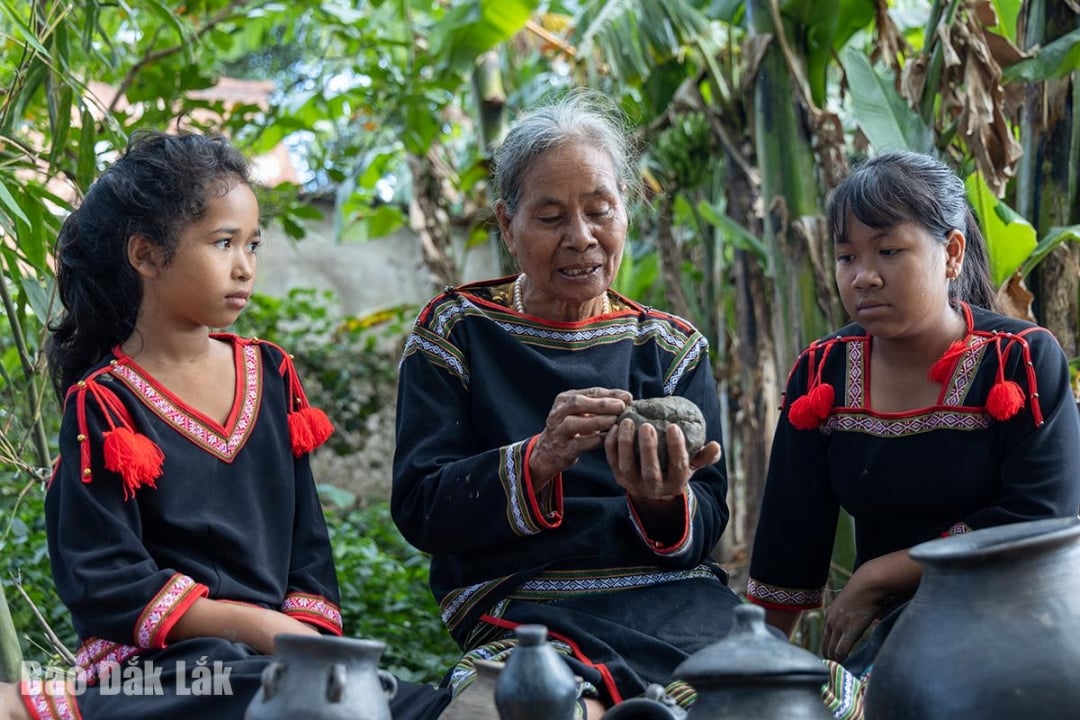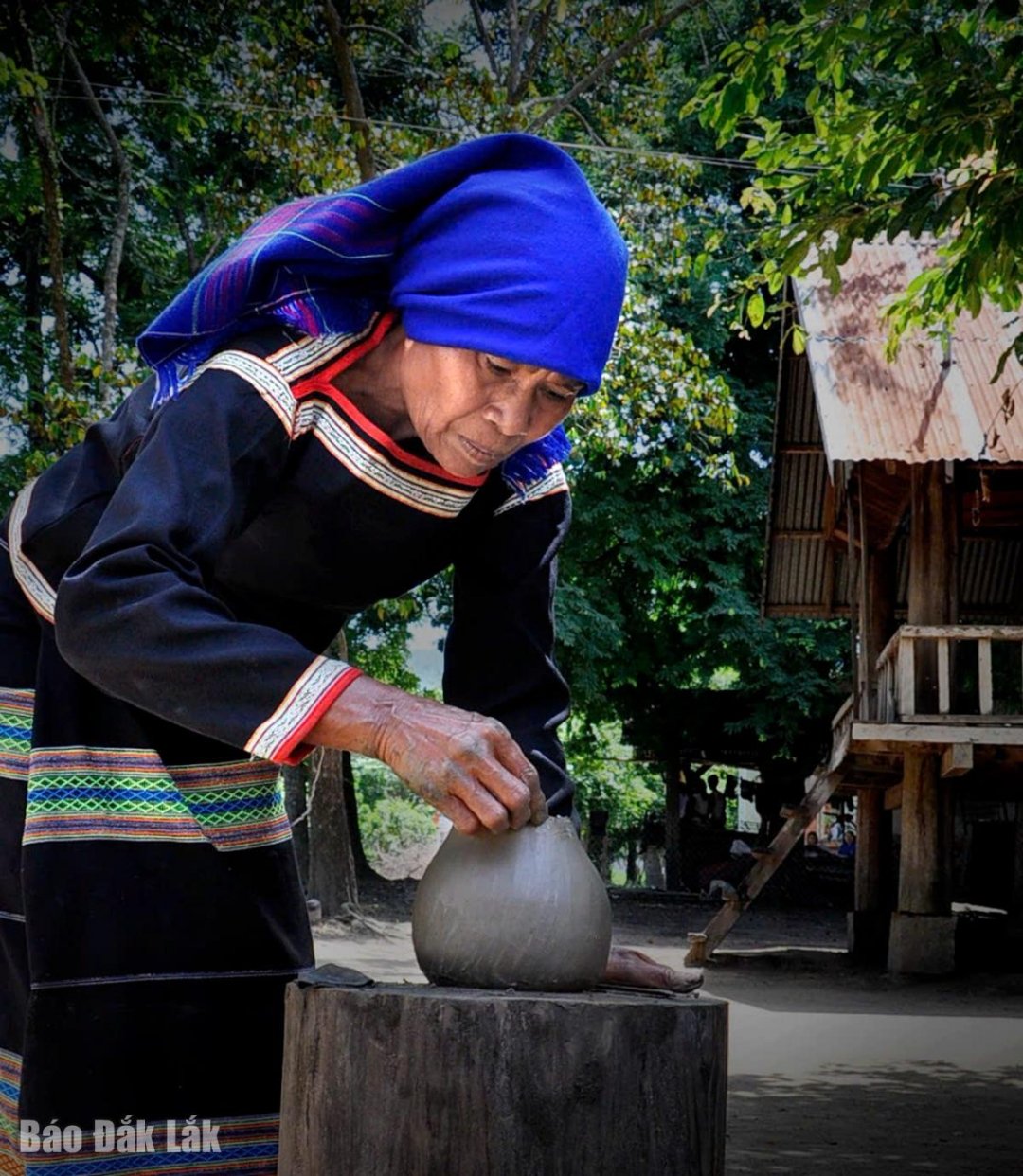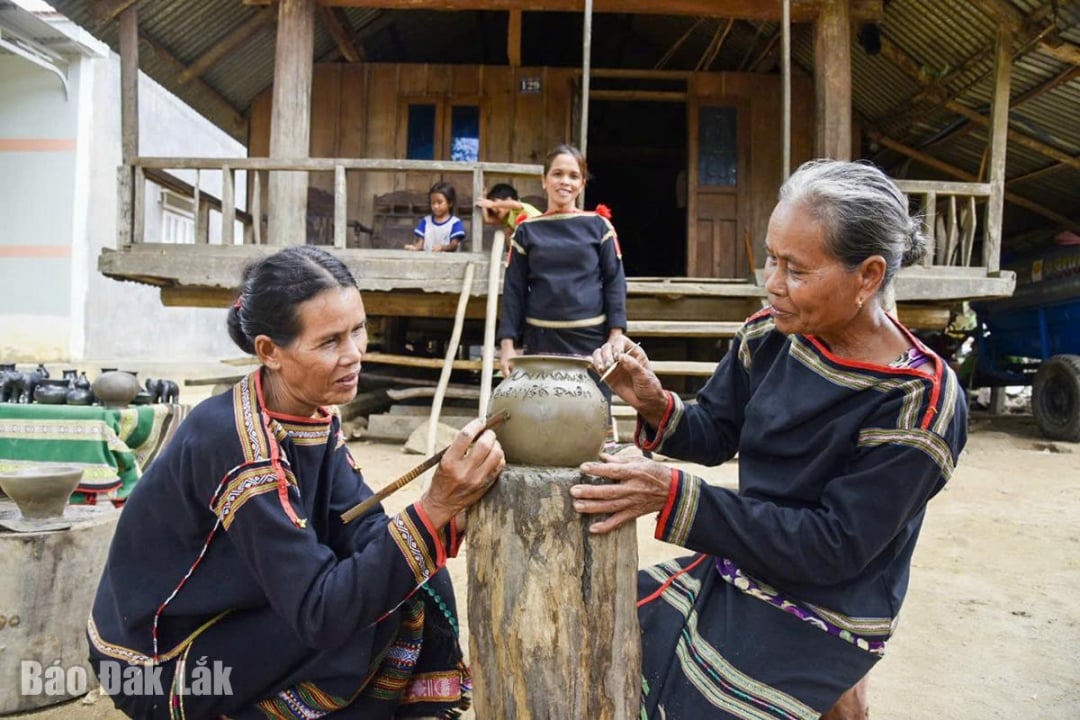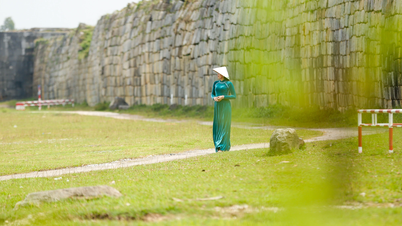Each place gave me different impressions. But when I arrived at Dơng Bắk village, Yang Tao commune, Lắk district, and saw the M'nông Rlăm women making pottery for the first time, I was truly astonished. Perhaps this is the most primitive pottery-making method I have ever witnessed, and it revealed the true beauty of this craft, considered one of the oldest of humankind.
I don't want to say much about the materials or pottery-making methods of the M'nong Rlam people. Because Yang Tao is located at the downstream end of the Mother River – the Krong Ana River – in the northeast, before it merges with the Father River – the Krong No River – to form the majestic Serepok River flowing westward. The land here is quite fertile, but importantly, deep along the alluvial plains there are always layers of smooth, pliable clay.
This is an abundant source of raw materials for the ami people to use in pottery making. The ami people bring the clay back and pound it with pestles until the clay fibers are evenly mixed and bonded together.
Next, the pounded clay is evenly stretched into long, tapered strands like ropes, with diameters varying depending on the product being made. These clay strands are then coiled or stacked from bottom to top to form the desired shape. Furthermore, without using a potter's wheel, the artisans use only their hands or a wet cloth to gently smooth and shape the clay, smoothing both the inside and outside surfaces until the product takes its final form, then drying it in the sun.
 |
| Pottery making in Yang Tao. Photo: Nguyen Gia |
At this point, the pottery body is considered complete. Depending on the weather, it is dried until it is sufficiently firm, then the patterns are painted on, and finally, it is fired. To add color, the artisans only create a smoky black color using fine ash from burnt rice husks. Pottery in Yang Tao is fired in the open air using wood or straw, taking only 1-2 hours to produce. That's all there is to it, but for me, Yang Tao pottery has a strange allure. And the Yang Tao pottery-making process mesmerizes viewers, drawing them into an experience difficult to explain.
Many books state that pottery first appeared around 7,000 BC, originating in the Middle East. Later, the Chinese, Japanese, Vietnamese, and many other Asian countries also learned to make pottery. The pottery craft and its products spread to Europe. Archaeologists also report that the earliest forms of pottery unearthed in the Middle East show traces of bamboo strips. As pottery developed, modern pottery products now incorporate thousands of different processes and techniques for shaping, coloring, and durability.
From this primitive pottery tradition, I've come to realize that art doesn't always need to be sophisticated or highly focused. Look at the artisans when they paint patterns on pottery; they use sharpened twigs to carve geometric lines or simple floral motifs. If a circle is needed, they use coins or bracelets. I've seen and admired artisans using seashells, spoons, and other objects to create patterns. This means that any object with a geometric shape can be used, without being constrained by tradition. In my opinion, that's art reaching a minimalist level. Minimalism in everyday life, using only two colors—the light brown of the pottery and the smoky black of the rice husk ash—yet it contains a unique concept of folk art.
 |
| Artisan Yang Tao pottery village. Photo: Huu Hung |
Many Central Highlands scholars also believe that, although Yang Tao pottery is simple, it holds the secrets of a bygone cultural flow. In a distant historical period, Yang Tao pottery was traded and exchanged in many places throughout the Central Highlands, even reaching the central coastal region, by merchants and owners of this pottery style.
Yang Tao pottery was officially listed as a National Intangible Cultural Heritage by the Ministry of Culture, Sports and Tourism in December 2024. Recently, in March 2025, a demonstration of the ancient Yang Tao pottery making craft took place at the Lak District Dugout Canoe Race, featuring many artisans and drawing admiration from visitors. However, like many other traditional crafts, Yang Tao pottery is facing difficulties and challenges in promoting and marketing its products.
 |
| The process of painting patterns on pottery. Photo: Huu Hung |
The Yang Tao pottery line of the M'nong Rlam people is indeed struggling to reach the market, but I think this is just a temporary setback in an increasingly pragmatic life. I say this because I have visited and witnessed many pottery villages like Thanh Ha ( Quang Nam ), Bau Truc (Ninh Thuan)... that have been reviving and even thriving. Of course, all of this is thanks to the correct policies and guidelines of relevant levels and sectors, and importantly, the dedication of the artisans who keep the craft alive. Therefore, I hope to hear whispers from Yang Tao pottery, that one day soon it will once again be known, sought after, and loved by the public – a product line embodying the red basalt soil of this plateau.
Source: https://baodaklak.vn/phong-su-ky-su/202505/thi-tham-tu-gom-yang-tao-e5906a4/







![[Photo] Prime Minister Pham Minh Chinh presides over a meeting on private sector economic development.](/_next/image?url=https%3A%2F%2Fvphoto.vietnam.vn%2Fthumb%2F1200x675%2Fvietnam%2Fresource%2FIMAGE%2F2025%2F12%2F20%2F1766237501876_thiet-ke-chua-co-ten-40-png.webp&w=3840&q=75)



























































































Comment (0)